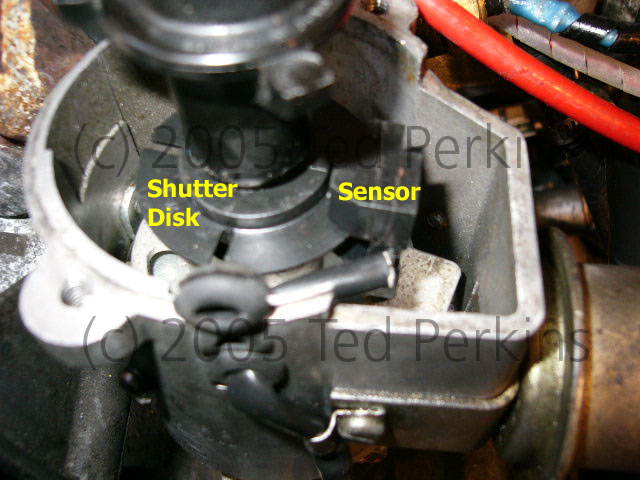| The 2200 left the factory with a Ducellier distributor with a centrifugal advance, and a simple coil. Soon after this car's production year Citroen used a distributor with a combined centrifugal and vacuum advance. The vacuum mechanism smoothes the advance curve, and allows for a more aggressive advance. So for over a year I was trolling ebay for a replacement distributor. Finally one turned up in Germany. | |
| I also wanted to ditch the
points+condensor setup for an electronic trigger. I did lots of
research on electronic trigger retrofit kits. The one I found
was available for 4-cylinder applications. This is the kit my
nearby garage on York Avenue refits to old Jags and RRs.
Images provided by manufacturer:
|
|
|
|
|
|
The system is pretty simple. An LED is mounted vertically in the distributor body in the same place where the points were. Opposite the LED is a photo sensor. A plastic disc is mounted on the distributor shaft. The disc blocks the LED light from the sensor. This disc has slots, one for each cylinder. When the slot passes the through the gap in between the LED and the sensor, light passes through to the sensor. The sensor sends a signal to the control box. (I don't think it is sophisticated enough to be considered a computer.) The control box opens the circuit to the coil, inducing a spark. The elegance of this arrangement is that it is not subject to errors caused by wear in the distributor shaft. The Citroen electronic triggers used reluctance effect to trigger a spark. When a metal piece passes close enough to a permanent magnet, the field characteristics of the magnet are changed, and this signals the computer to induce a spark. As any owner of a later citroen can attest, magnetic sensors are pretty finicky. The air gap between the sensor and the metal has to be exactly the right distance. Too far, and the sensor won't detect the presence of the metal. Too close, and you can chew up the sensor. A worn distributor shaft that is moving in an oscillating pattern could introduce either of these unwanted events. Hall- effect triggers are also susceptible to these problems, because of the close tolerances between the iron shutter and the Hall sensor. A little bit of wobble & the sensors get torn up. Not a problem with the photosensor. But on the other hand, the photosensor could have its own set of unique weaknesses. I'll have to see how well it functions in practice. The nice thing about this kit is that it can be installed without permanent modification to the distributor. If I need to go back to the original trigger mechanism, I can. There are also Hall-Effect triggers out there, but I could not find a generic 4-cylinder kit - they ere for V-8 and sixes. There's a good explanation of the different trigger mechanisms here. Several images of the photo trigger installed in the distributor: |
|






